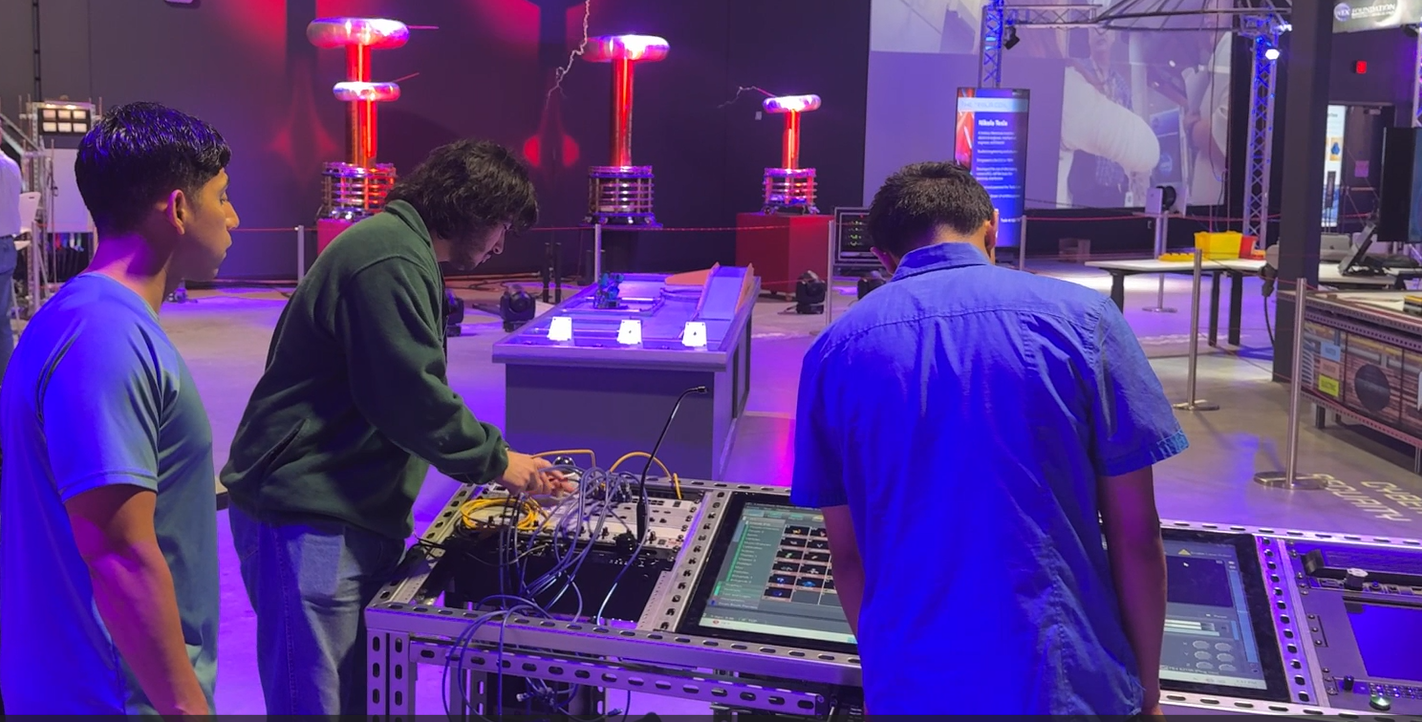


This work is supported by U.S. National Science Foundation Award Number 2417095: Intern Research and Development at the Science Center: Exploring Roles and Learning as Students and Mentors Build High-Tech Exhibits.

Intern R&D at the Science Center
Intern R&D is a National Science Foundation-supported program where college students build museum-quality exhibits, guided by mentors from industry led by the local chapter of the Institute of Electrical and Electronics Engineers (IEEE).
-
Paid internship
-
Intern and mentor experience
-
Build your resume
-
Build your professional network

Eligibility
Must be an undergraduate student at:
-
St. Mary's University
-
Texas A&M University-San Antonio
-
Trinity University
-
The University of Texas at San Antonio

University Faculty Partners

Wenbin Luo, Ph.D.
Professor of Computer Engineering
St. Mary's University

Sayantan Das, Ph.D.
Asst. Professor of Material Science
Texas A&M University
-San Antonio

Kevin Nickels, Ph.D.
Assoc. Professor of Engineering Science
Trinity University

August Allo, M.S.
Assoc. Professor of Instruction,
Electrical and Computer Engineering
UTSA

Johnathan Votion, Ph.D.
Asst. Professor of Instruction,
Electrical and Computer Engineering
UTSA

Videos
Program Overview
Dr. Cliff Zintgraff, Chief Learning Officer at SAMSAT, discusses the program.

Research Agenda
Main question: Can internship impacts be achieved with a science center acting as an intermediary between universities and industry?
1. What do students learn during intern R&D at a science center?
2. Are professional associations an effective source of mentors?
3. Does student application of knowledge improve?
4. Are benefits seen to university academics?
5. Do students receive non-academic (21st century; SEL) benefits?
6. Are there improvements in student intent, retention, and/or entry into STEM careers?
7. Did clear evidence emerge for/against cited theories/models of learning and career development?





